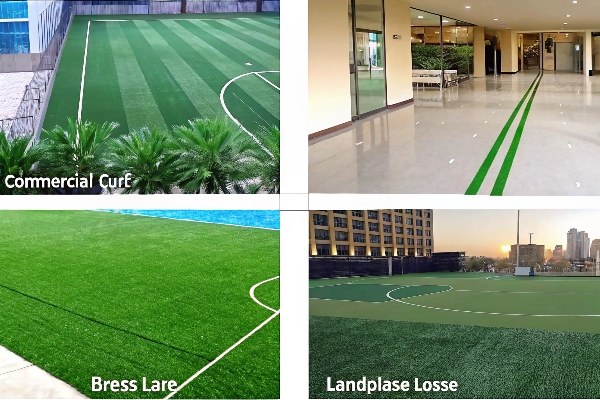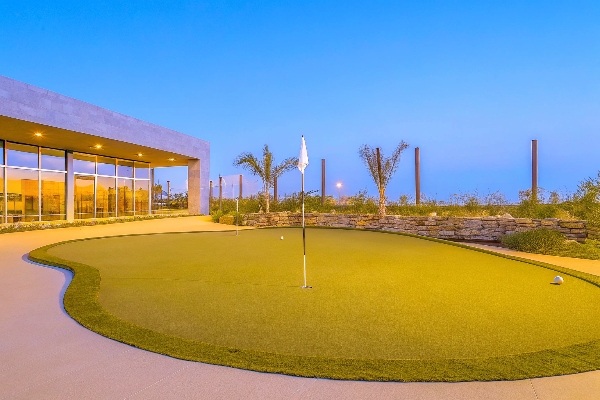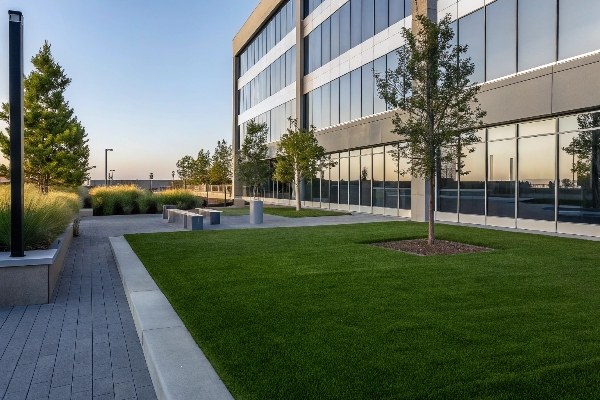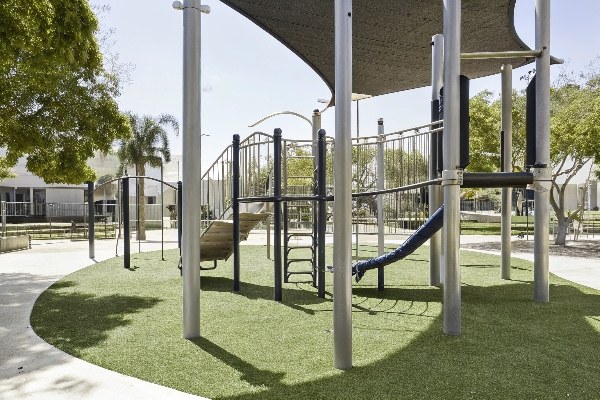Your commercial space looks worn out. High foot traffic and weather ruin natural grass. Artificial turf provides a durable, green, and professional look year-round for many business applications.
Artificial turf is used commercially for sports fields like football and tennis, as well as for landscaping around offices and hotels. It’s also perfect for playgrounds, event venues, rooftop bars, and even indoor putting greens. Its versatility makes it a smart business choice.

I’ve seen clients transform their businesses with artificial turf. But not all applications are equally profitable. It’s important to understand where the real money is. Let’s look at which commercial uses can bring the best return on investment.
What Are the Most Profitable Commercial Applications for Artificial Grass?
Investing in artificial turf is a big decision. You need to ensure it pays off. Choosing the wrong application can be a costly mistake, but the right one generates significant profit.
The most profitable uses are often pet facilities like doggy daycares, small sports venues such as putting greens or padel courts, and premium commercial landscaping1. These areas command higher prices and benefit most from turf’s durability and low maintenance, boosting your return on investment quickly.

Let’s explore why certain applications are more profitable. It’s not just about the upfront cost; it’s about the value you create. I worked with a client who converted an unused space into two padel courts2. The installation cost was significant, but they now charge hourly rates and host tournaments. This created a constant revenue stream that paid for the investment in under two years. High-end businesses also see huge value. A luxury hotel can charge more for rooms overlooking a pristine, green courtyard that requires zero watering or mowing.
Key Profit Drivers
The profitability comes from a few key areas:
- Reduced Operating Costs: Less water, no mowing, no fertilizers.
- Increased Usability: The space is available 24/7, in any weather.
- Premium Branding: A clean, green, professional look attracts higher-paying customers.
Here is a simple breakdown of the potential:
| Application | Initial Cost | Maintenance Savings | Revenue Potential |
|---|---|---|---|
| Pet Turf & Daycares | Medium | High | High (per-client fees) |
| Padel/Tennis Courts | High | Medium | Very High (rental fees) |
| Rooftop Bars/Venues | Medium-High | High | High (premium venue pricing) |
How Can Artificial Grass Boost Curb Appeal and Value for Commercial Properties?
A tired-looking exterior can make your business invisible. Dead patches and muddy walkways turn customers away before they even step inside. Artificial grass offers an instant upgrade, creating a welcoming green space.
Artificial grass boosts curb appeal by providing a vibrant, perfectly manicured look 24/7, regardless of weather. This aesthetic consistency makes properties more attractive to tenants and customers, directly increasing perceived value and allowing for higher rental or sale prices.

The connection between curb appeal and property value is direct. A potential tenant or buyer makes a judgment in seconds. I’ve seen this firsthand. We installed turf for a small retail strip that was struggling to attract businesses. The old lawn was patchy and sad. After we installed a lush, green turf entrance, it completely changed the feel of the place. Within six months, they were fully leased and could even charge slightly higher rents. The new, clean look signaled quality and care, which is exactly what new tenants wanted their customers to see.
The "Always-On" Welcome Mat
Think of it as a permanent welcome mat for your business.
- Retail and Hospitality: A beautiful entrance makes customers feel welcome. It suggests a high-quality business inside. It also creates great photo opportunities that people share online, giving you free marketing.
- Office Parks: Companies want to lease spaces that reflect a professional image. A well-maintained landscape is a key part of that, and turf ensures it always looks perfect for clients and employees.
- Residential Complexes: For apartments or condos, attractive common areas are a major selling point. Turf allows for beautiful, usable green spaces without the high maintenance costs.
Why is Artificial Turf a Cost-Effective Solution for High-Traffic Public Spaces?
Busy public spaces destroy natural grass. Constant foot traffic turns lawns into mud. This leads to endless reseeding and repair costs, not to mention a poor user experience.
Artificial turf is cost-effective for high-traffic areas because it eliminates recurring expenses like watering, mowing, fertilizing, and pesticides. Its strong durability means fewer repairs and replacements, leading to a lower total cost of ownership over its long lifespan compared to natural grass.

When my clients look at the initial price, I always tell them to think about the Total Cost of Ownership (TCO). Natural grass seems cheap at first, but the long-term costs add up fast. This is especially true where many people walk every day. Think about a community park or a school playground. These areas are used constantly. Natural grass can’t recover. You are always paying for water, landscaping crews, and new sod. The area is also often closed for maintenance, which is an indirect cost. Artificial turf removes these continuous expenses and keeps the area open for use all year round.
Natural Grass vs. Artificial Turf: 5-Year Cost
Let’s look at a hypothetical 1,000 square meter public area. The numbers are just estimates to show the point.
| Cost Factor | Natural Grass (5 Years) | Artificial Turf (5 Years) |
|---|---|---|
| Installation | Low | High |
| Mowing/Labor | High (~$10,000) | None |
| Watering | High (~$5,000) | None |
| Fertilizers/Pesticides | Medium (~$2,500) | None |
| Reseeding/Repairs | Medium (~$2,500) | Low (minimal) |
| Total Upkeep | ~$20,000 | ~Very Low |
The upfront investment in turf pays for itself within a few years just from maintenance savings. Plus, the space is always safe and usable.
Conclusion
Artificial turf offers profitable, attractive, and cost-effective solutions for businesses. From sports fields to landscaping, it enhances property value and saves money on maintenance, making it a smart commercial investment.
_画板-1.png)
_画板-1.png)